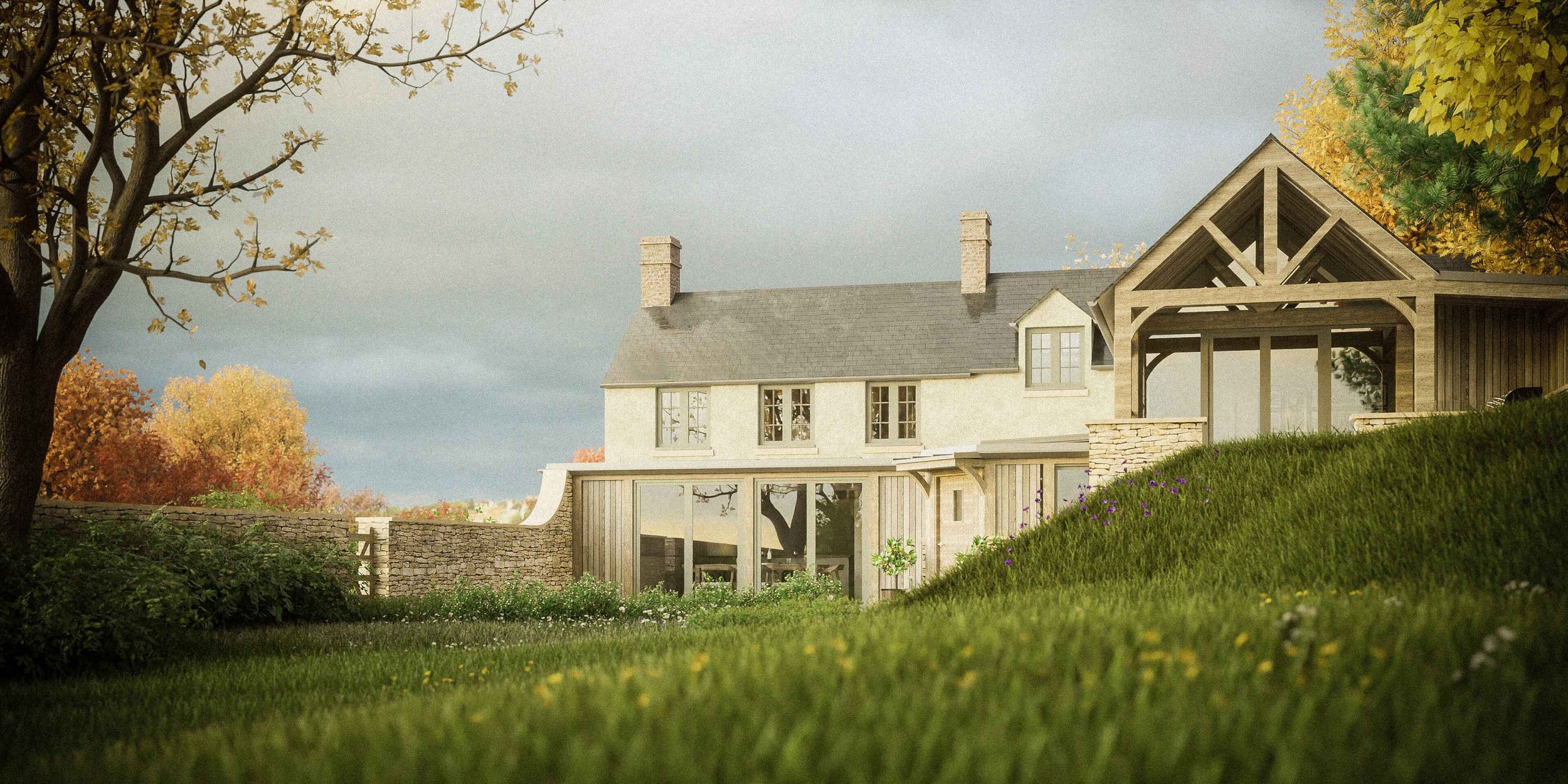
Creative & Sustainable Design for Residential Projects
Joshua Hovey is a RIBA Chartered Architect & Certified Passivhaus Designer, Serving Somerset, Gloucestershire and Surrounding Areas.
Sustainable & Innovative
New-Build
We help self-builders looking to design their dream eco-home, and land owners looking to maximise the potential of their plot. We have a proven track record of securing planning permission within challenging design constraints such as conservation areas, national parks, AONBs and near listed buildings.
Contemporary Extensions
We design beautiful contemporary extensions. Transform your living space by adding natural light, improving the connection with the outdoors and creating harmony between spaces.
Listed and Heritage Property Alterations
Do you have a listed building or period property which lacks natural light, feels disconnected from the outside and has poor flow between living spaces? We are experts at turning period properties into functional homes, customised for modern living.
Sensitively Designed Barn Conversions
We are architects skilled at working with listed buildings such as barn conversions, in conservation areas and AONBs and with complex design constraints. Let us help you to make the best use of your existing building.
Home Architects | Joshua Hovey Architects
Key Design Considerations When Planning an Architectural Project for Your Home
Understanding Your Home’s Context
When planning an architectural project for your home, understanding the context is essential. This involves evaluating the existing site conditions, including the landscape, orientation, and surrounding environment. Architects should assess how the project fits within the broader context of the neighbourhood and any local planning regulations that may apply. By considering these factors, architects can ensure that the design integrates seamlessly with the existing environment and complies with local guidelines.
Prioritising Functionality and Flow
Functionality and flow are crucial when designing a home project. Architects should work closely with homeowners to understand their needs and how they use their space. This includes optimising the layout to improve connectivity between rooms, ensuring that traffic patterns are logical, and making efficient use of available space. Effective design enhances the functionality of the home and ensures that every area serves a purpose, contributing to a more comfortable and practical living environment.
Incorporating Sustainable Design Elements
Sustainability is increasingly important in home architecture. Architects should incorporate sustainable design elements to reduce environmental impact and enhance energy efficiency. This involves selecting eco-friendly materials, integrating energy-efficient systems, and employing sustainable building practices. By prioritising these elements, architects can help homeowners create a more environmentally responsible and cost-effective living space.
Harmonising with Architectural Style
Harmonising with your home’s existing architectural style is vital for maintaining aesthetic coherence. Architects should consider the current style of the home and ensure that any new additions or renovations complement this style. Whether the home is traditional, contemporary, or a mix of styles, the design should enhance the existing features and contribute to a unified appearance, ensuring that new elements blend seamlessly with the old.
Enhancing Comfort and Well-being
The ultimate goal of any home architectural project is to enhance comfort and well-being. Architects should focus on creating spaces that improve the quality of life for occupants. This includes incorporating natural light, improving ventilation, and ensuring that the design supports a comfortable living environment. By addressing these aspects, architects can create homes that are not only visually appealing but also conducive to a high quality of life.
By focusing on these key design considerations, architects can plan and execute architectural projects that enhance functionality, harmonise with existing styles, incorporate sustainable practices, and ultimately improve the comfort and well-being of homeowners.









